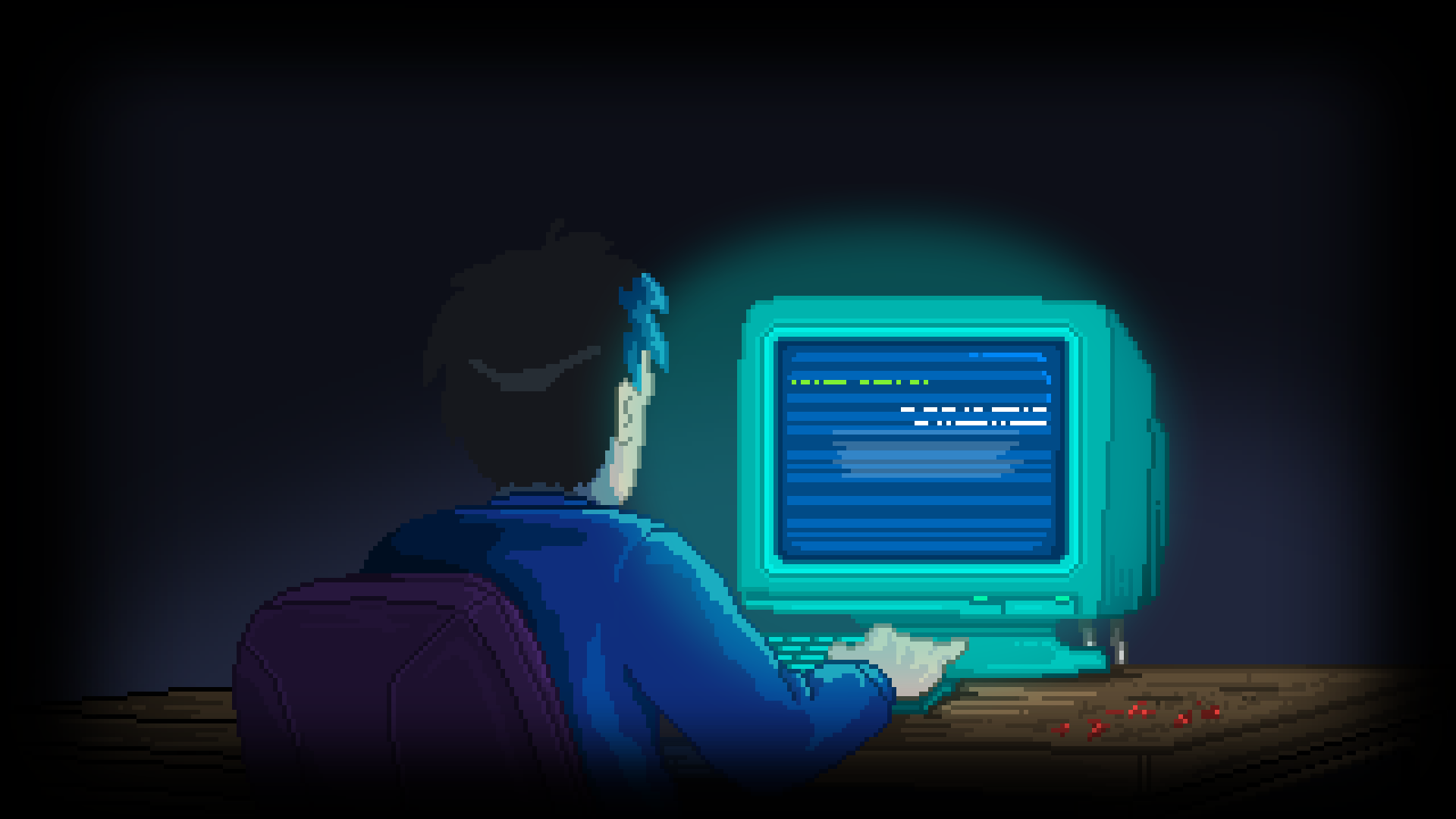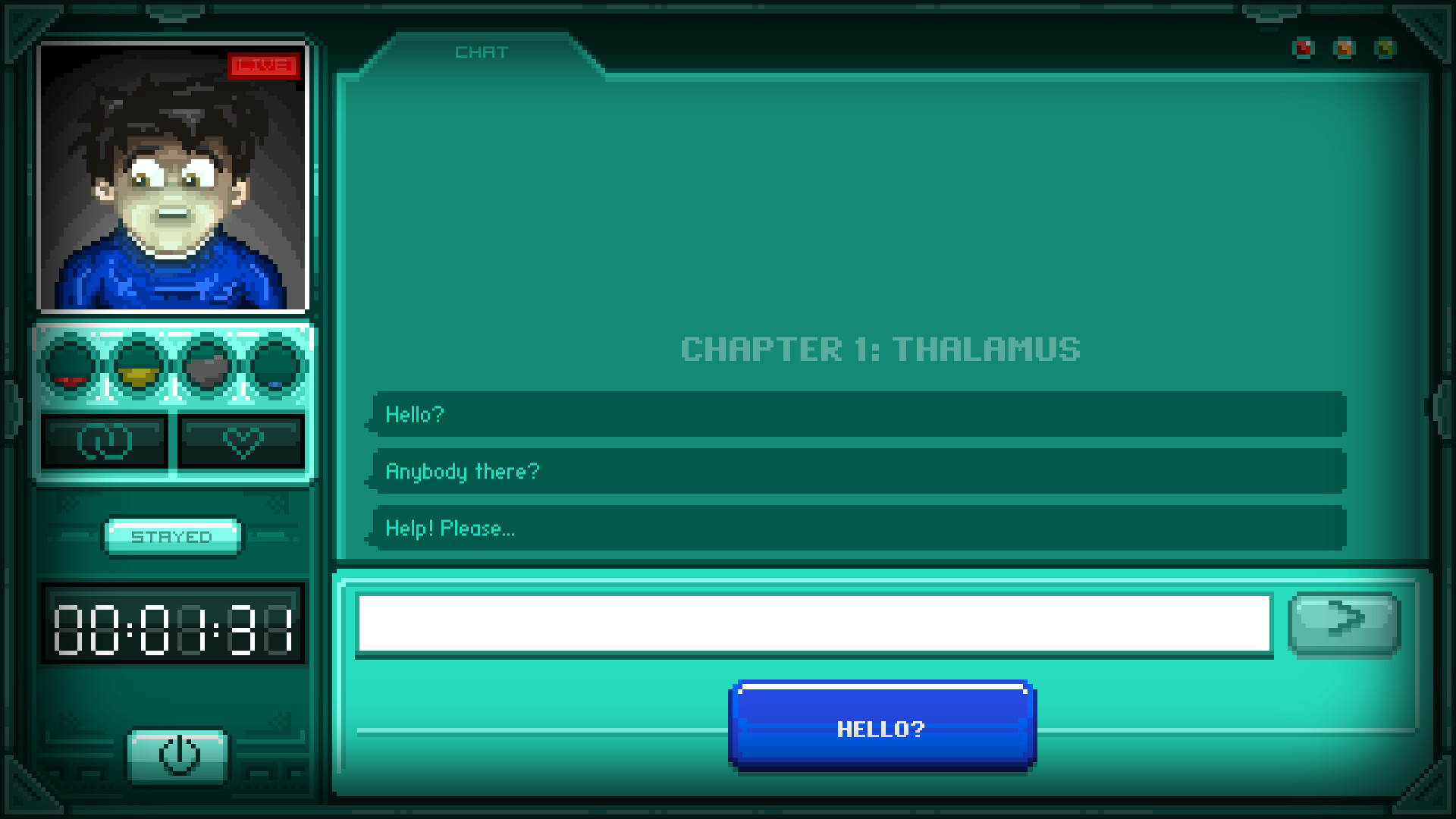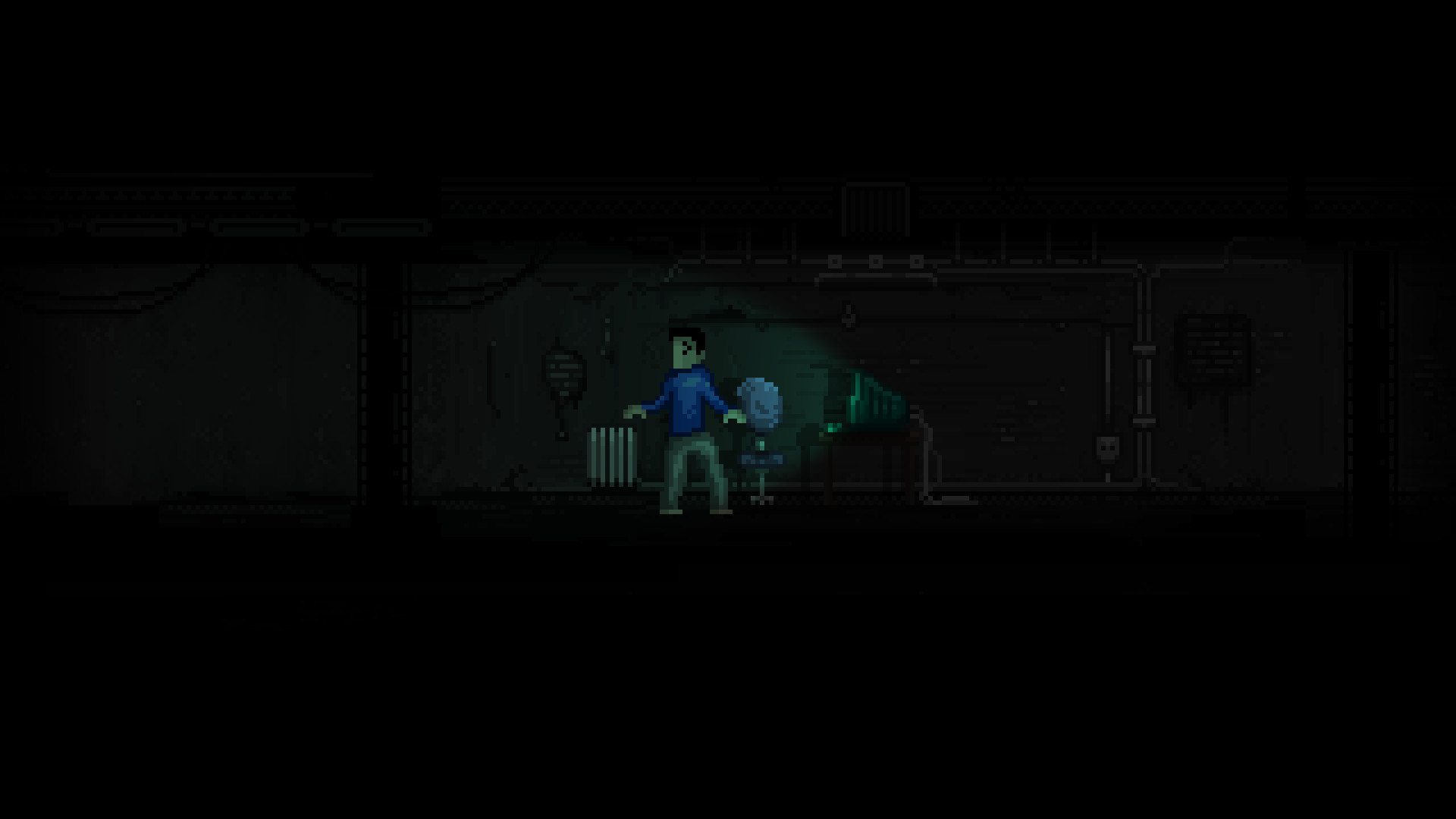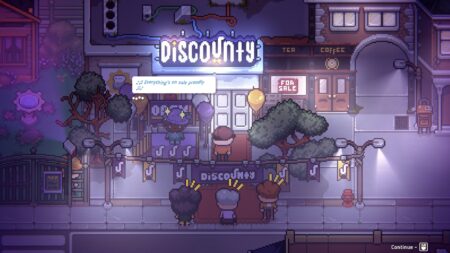You wake up in a dark room with only a computer screen lighting the place. At this point in time, it’s safe to assume that you’re going to see Jigsaw’s face across the screen. But nothing happens. Instead, you’re playing the death game with no idea why. What do you do? Reflect on every single moment of your life until you remember the single jerk that potentially put you there? Are you even sure he or she is the one responsible? Regardless, someone wants to play a game with you. What other choice is there but to play along?
Reviewed: Playstation 4
Platforms: Playstation 4, Xbox One, Windows
Developer: Appnormals Team
Publisher: PQube, Plugin Digitals
Release Date: September 12th, 2018
MSRP: $11.99
Review code provided by PQube
Overview:
Stay is a 2D puzzle game with inspirations drawn from the Saw franchise. The game tells the emotional story of Quinn, a therapist with not much to live for. One night, an unknown assailant abducts Quinn. He wakes up in a dark room with only the light of a computer screen illuminating it. He dusts himself off and begins typing. Oddly enough, he gets a response – from us, the players.
Gameplay and Features:
In essence, Stay closely resembles those Choose Your Adventure kind of books. By chatting with Quinn, we, the player is put in a unique position to guide him past the challenges the kidnapper may have set up for Quinn. To be clear, we do not directly control Quinn per say as many games do. Instead, we offer advice and depending on how much he trusts us, Quinn may or may not follow the advice we give him. Building trust is not as easy as it seems. Quinn is going through a rough patch in his life. He sees himself as a failure, and depression has taken hold of him. If the player says the wrong thing or give him any reason to end contact, it’s Game Over.
The only time the player takes control of Quinn is during the puzzle segment. At least once per chapter, Quinn comes across a puzzle that the player must solve in order to advance. The kind of puzzle the player encounters mostly relies on the direction of the story. An indicator lets the player know that they’ve reached a point in the story where it branches out to other possibilities. It’s often good to know when these moments occur should one chooses to replay the game again with different choices. At the end of each chapter, a statistic pops up informing us of the percentage of players’ choices during the chapter’s key decision. There is even a silly message the devs left behind to poke fun at the player and their thoughts on the decision.
Here’s the rub, the player needs to constantly stay in contact with Quinn in order to see the whole story through. The entire game is on a time limit, and going past the limit is grounds for instant Game Over. Also, should the player decide to leave for an extended period of time, the timer counts down and Quinn will eventually cease contact with the player. At that point, there’s no other choice but to start all over again. It’s a unique idea to say the least.
The Good and the Bad:
Quinn is a troubled man. He constantly doubts himself and his ability to escape his current situation. He talks a lot about his past failures and having no hope for the future. But that’s not all that he is though. He is a very intelligent man with knowledge on many subjects. He even brings out the occasional pop culture reference when he’s in high spirits. It’s not a stretch to say that we are his only life line, and that’s all the reason one needs to keep playing all the way to the end. It’s an emotional roller coaster with orchestral music playing in the background to emphasize the weight of every single waking moment of the ordeal.
The other half of the game is all about puzzles. The experience with this game greatly varies depending on which puzzles you encounter. Some are fun and require a bit of logic. The ones with a definite solution are well designed puzzles. On the flip side, we get puzzles that hardly explain anything with solutions that require a lot of luck and guess work. These are poorly designed and will most likely destroy the experience for many a player.
A personal favorite of mine involves a chess board and its pieces. The player is able to rotate the white pieces and place them in certain tiles. The other pieces are green in color. At first glance, it may seem difficult until a closer look reveals the secret to solving the puzzle. A good bit of telegraphing and hint dropping is all that it takes to allow the player to confidently tackle the puzzle while feeling clever in the process. That’s what most puzzles should boil down to – looking for a pattern and working towards unraveling the knot.
The second batch of puzzles are what I would consider 50/50 puzzles. For the most part, they do involve a bit of logic. However, players with stock knowledge may find these ones easier to solve. An example of this is the map puzzle. The player is given a map with connecting points. They control a compass and must link points together while rotating the compass to true North. A set of symbols is the only hint that the player gets. Here’s the thing, without knowledge of geography, the player may not be able to tell the points apart. Furthermore, if they do not have knowledge of languages, they may find it hard to tell which language falls under which location. See what I’m getting at here.
The final set of puzzles I want to touch up on are the luck based puzzles. I hate these kinds of puzzles with every fiber of my being. This is lazy game design at its worst. The example I want to put here is the furnace puzzle. There are 5 symbols that need to be arranged in a certain order. You have 10 tries to get it right or else the mechanism resets. The correct order randomizes, ensuring that players never get the same order. To make things worse, the combination may also include multiples of the same symbol. We are looking at 3125 possibilities, and only 10 chances to get them right. It is beyond frustrating. The game also sees fit to NOT letting us know which symbol is correct but instead letting us know the number of correct symbols.
Final Verdict:
Brilliant yet so flawed in so many ways, Stay is one of those games that is so polarizing that it’s rather really hard to score. The divisive nature of the game makes it very hard to get an accurate read of the entire experience, since it mostly depends on the path the player chooses plus a little bit of luck along the way. If I didn’t come across puzzles like the furnace or the wall puzzle, I would give this game a much higher score. But be that as it may, I must be fair and rate this game based on my own choices rather than the whole potential experience. The story certainly resonates with all of us but it all boils down to which puzzles the player ultimately gets that determine how fun the experience is. Still, I recommend this game to anyone looking for a challenge.










